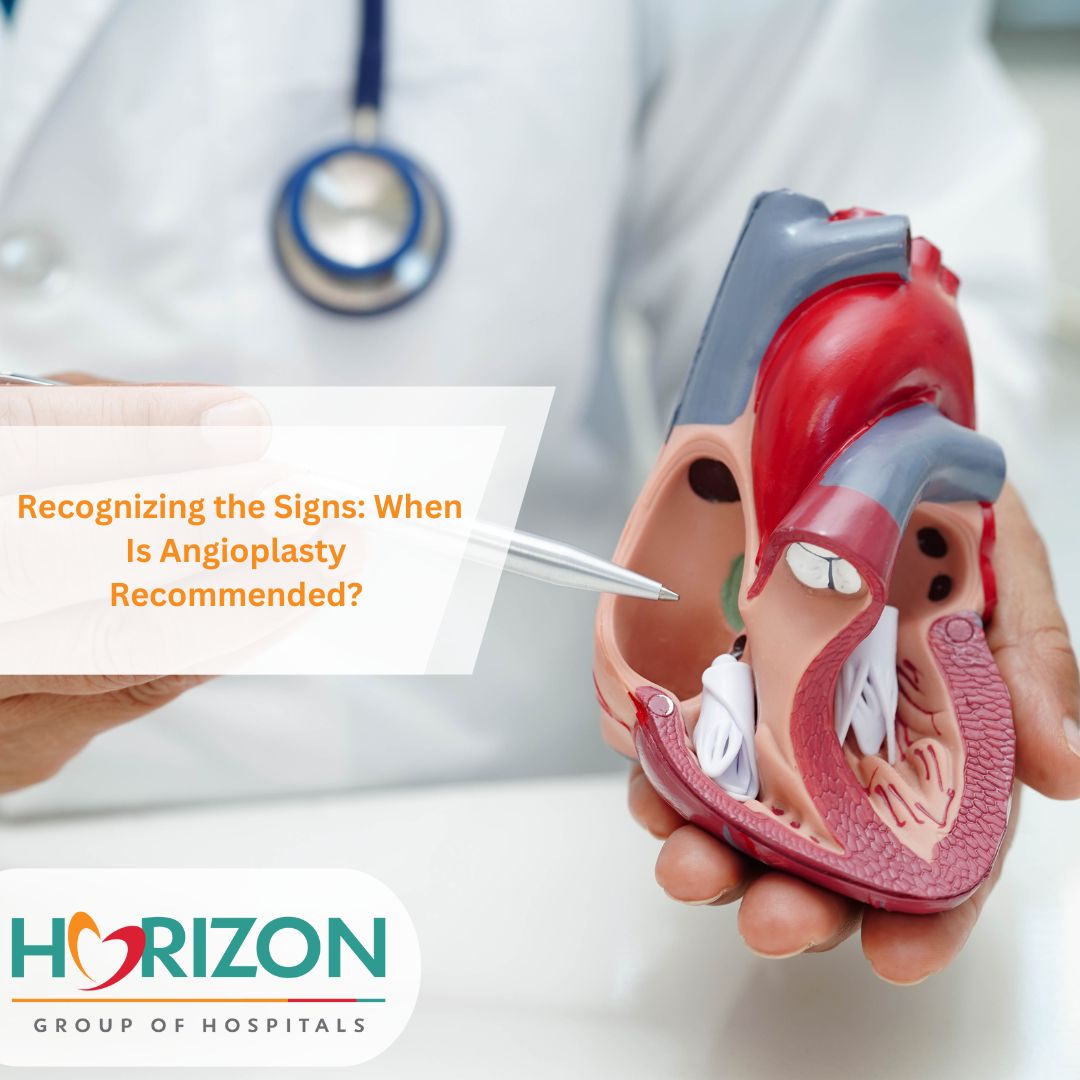
Coronary Angioplasty, A Life Saving Procedure
Coronary angioplasty is a life-saving procedure that restores blood flow, treats blocked arteries, and prevents heart attacks effectively.
In India, nearly 4.5 lakh patients undergo angioplasty annually. Many people also undergo bypass surgery to open up the blocked artery. Have you ever wondered how quickly life can get back to normal after undergoing angioplasty? For many, this life-saving procedure raises questions about recovery time, physical activity, and when to resume daily routines. The good news is that with proper care and guidance from an experienced and skilled heart specialist, most people can return to their regular activities sooner than expected. However, the recovery process depends on various factors such as your overall health, the complexity of the procedure, and how well you follow post-procedure recommendations. A heart angioplasty is a procedure to open narrowed blood vessels of the heart to improve blood flow. Another term for this procedure is percutaneous coronary intervention (PCI).
Angioplasty, also known as percutaneous coronary intervention (PCI), is a minimally invasive procedure used to open narrowed or blocked coronary arteries. It involves threading a thin tube called a catheter with a small balloon at its tip into the affected artery. Once in place, the balloon is inflated to widen the artery, allowing blood to flow more freely to the heart. Often, a stent (a tiny wire mesh tube) is inserted to keep the artery open long-term.
This procedure is fundamental for individuals with coronary artery disease, which can cause chest pain (angina), windedness, or even heart assaults. By restoring a legitimate blood stream, angioplasty essentially lessens the gamble of heart-related complications and works on generally speaking personal satisfaction.
Dr Hrushikesh Vaidya, Medical Director and Chairman, Horizon Group of Hospitals said “People may have heart angioplasty and stenting to treat coronary artery disease. Coronary artery disease is characterized by the narrowing of the arteries, which limits blood flow and oxygen that supply the heart. Plaque build-up on the artery walls is usually responsible for narrowing the arteries. Plaques comprise fatty substances, cholesterol, waste products, fibrin (a clotting material), and calcium. The medical term for plaque build-up is atherosclerosis. Sometimes, heart angioplasty with stenting may be an emergency procedure in response to a heart attack.”
Dr Hrushikesh Vaidya further added “The angioplasty treatment has an extremely high success rate. More than 90 per cent of patients have successful angioplasty, which means that the procedure properly opens clogged blood veins around the heart. Approximately 30 to 40% of such patients experience re-narrowing of the blood artery at the point of balloon inflation”.
Dr Ria Vaidya, CEO, Horizon Group of Hospitals said “Angioplasty is a minimally invasive procedure, but it is still surgery, and people must follow their doctor’s instructions carefully beforehand. One month after a stenting treatment, one can anticipate returning to pre-disease exercise levels. Heavy exercise such as lifting weights or walking up steep slopes should be avoided for about 4-6 weeks. It’s essential to maintain a healthy lifestyle and diet post the procedure. A healthy lifestyle consists of a balanced diet, regular exercise, and avoiding tobacco consumption. Always follow your doctor’s instructions by taking the prescribed medication and attending your follow-up appointments.”
Angioplasty is a valuable procedure to treat atherosclerosis (a build-up of plaque consisting of fat and cholesterol) in various parts of your body’s arteries.
- Coronary artery disease: A narrow or clogged coronary artery can prevent your heart from receiving the oxygen it needs, resulting in chest pain and/or a heart attack, angioplasty, or percutaneous coronary intervention, is beneficial for a healthy heart.
- Peripheral artery disease: Angioplasty is a procedure used to treat atherosclerosis in the major arteries of the arms, legs, and pelvis.
- Carotid artery disease: A clogged artery in your neck can be treated by angioplasty. If left untreated, they can progress to the point where your brain does not receive enough oxygen to function correctly.
- Chronic kidney disease: Plaque buildup in the arteries affects the amount of oxygen that can reach your kidneys. In some cases, angioplasty of the renal artery may be necessary to alleviate the problem.
Types
There are two main types of angioplasty:
- Balloon angioplasty, which involves using the pressure of an inflating balloon to clear plaque that is blocking an artery. This is rarely done alone except in cases when doctors are unable to place a stent in the required position.
- Stent placement in the artery, which involves a tube, or stent, made out of wire mesh. Stents help to prevent an artery narrowing again after angioplasty. Stents may be made of bare metal or have a coating of medication. When they include medication, they are called drug eluting stents (DES) and are less likely to plug up again. DES are now used almost exclusively with very little use of bare metal stents.
Risks
Although serious angioplasty problems are rare, all invasive procedures include some risks. For example, an angioplasty may require an emergency coronary artery bypass transplant. Complications occur in around one out of every 100 procedures, though this number may vary.
- injury to blood vessels
- recurrence of blockages
- bleeding
- infection
- allergic reaction to contrast dye
- blood clots
- stroke
- heart attack
People can discuss potential side effects with a doctor. If people have any kidney problems, they must discuss this with their doctor. Contrast dye may affect kidney function. Therefore a doctor will assess the risk of using them before the procedure.
The Procedure
Angioplasties are performed on patients with coronary artery disease or a heart attack. Angioplasty is also served in the neck, arms, legs, kidneys, and pelvis to open blocked arteries. Angioplasty widens a plaque-clogged artery that improves blood flow to the organ served by the artery.
Before beginning angioplasty, a healthcare practitioner will clean and numb where the catheter will be inserted into the body, which is generally the groyne but can also be the wrist in some cases. In the next step, a doctor places a catheter in the artery and directs it toward the coronary artery, using x-rays as a guide. Once the catheter is in place, the doctor injects a contrast dye into the artery to help find heart blockages. The doctor inserts another catheter and a guidewire after a thorough examination, typically with a balloon at its tip. Post which, the doctor inflates the balloon, which pushes the plaque build-up away and opens the artery. A stent may be used to maintain the artery open. Angioplasty can take several hours depending on the difficulty, several blockages, and complications.
The Recovery Process
Most people can return to work in a week, although their doctor will prescribe their activity level. The post-angioplasty visit is an integral part of the treatment. A person may also require cardiac rehabilitation, where they receive counselling and a supervised exercise program. The doctor will assess the patient’s progress, modify medications as needed, and build an ongoing cardiovascular health plan.
After the angioplasty cardiologist removes the catheters and bandages, catheters can cause pain, bruising, and even bleeding when inserted into the body. After the procedure, healthcare professionals will monitor people in a recovery room in the hospital. In most cases, people remain in bed for 2–6 hours. An overnight hospital stay is usually required, but some people may be able to go home on the same day.
If doctors use the groin to access the blood vessel, a person will need to lie flat with the leg straight for several hours. If doctors insert the catheter into the arm or wrist, keeping the arm straight and elevated may be beneficial. If they use the wrist, they will apply a tight band and monitor the area for bleeding for several hours.
Once people are able to go home, it is important to drink plenty of fluids and avoid strenuous exercise or heavy lifting for at least 24 hours.
Post-Angioplasty Care
- Make sure you have the correct medications
- Understand wound care and cleanliness
- Maintain regular doctor visits
- Do only light activities in the first few weeks after discharge
- Make an effort to eat a more balanced, nutritious diet
- Quit smoking and drinking
- Participate in cardiac rehab
Lifestyle Modifications
Doctors may recommend certain lifestyle modifications following a heart angioplasty and stent placement. Healthy diet and lifestyle changes can help reduce the risk of heart attack, stroke and the need for future procedures.
- reaching and maintaining a moderate weight
- getting routine exercise like cycling, brisk walking, swimming, aerobic exercise etc
- eating a heart-healthy diet like nuts, whole grains, sprouts or legumes, dark chocolates etc
- managing stress
- quitting or avoiding smoking
The Final Takeaway
A heart angioplasty is a procedure to open narrowed arteries supplying blood to the heart. Angioplasty is generally safe and effective but does not come without complications. As with every surgical procedure, coronary angioplasty has its share of risks. However, there is a very low chance of significant complications. A person can live a healthy life after angioplasty by simply controlling CAD risk factors and being fit. Lifestyle changes and medications help maintain a good quality of life. Most people need to take blood-thinning medications for up to 1 year after having an angioplasty.
Horizon Prime Hospital is one of the best hospitals in Thane for heart healthcare. The Department of Cardiology is equipped with The Next Generation image-guided therapy Cath Lab for outstanding interventional cardiac procedures, electrophysiology, neuro and vascular performance for precise diagnostic results with delivering evidence based treatment. Our team of best cardiologists and interventional radiologists are having extensive experience in performing angiography and angioplasty procedure. For several people, the response comes in a matter of weeks. Recovery timeframes, however, differ based on your specific health, the intricacy of the treatment, and how closely you adhere to your doctor’s recommendations. Following an angioplasty, you can resume leading a full and confident life by taking good care of your heart, exercising, and adopting healthy lifestyle choices. To guarantee the greatest possible recovery, always seek tailored advice from your healthcare specialist. Horizon Prime Hospital Cardiology Department can provide you with the care you need to make a full recovery.







